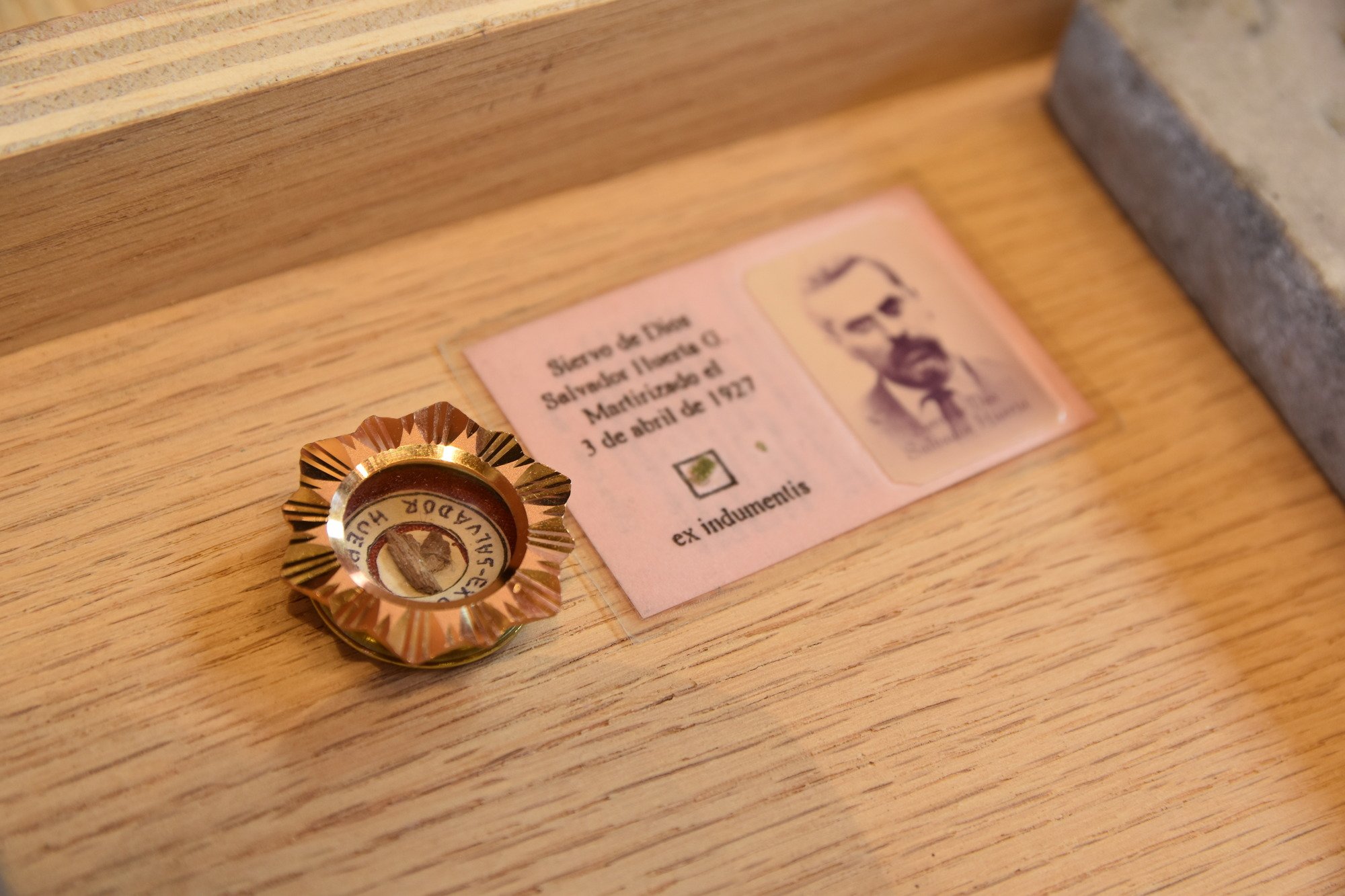-
-
-
An Antique Altar Receives New Life
The altar of our church was a special gift to our parish, and is composed of old and new elements: The beautifully carved oak base is an antique which has been carefully restored, and the top or mensa is a new slab of white marble.
Altar of Sacrifice, Table of the Lord, and Symbol of Christ
“The Mass is at the same time, and inseparably, the sacrificial memorial in which the sacrifice of the cross is perpetuated and the sacred banquet of communion with the Lord’s body and blood… The altar, around which the Church is gathered in the celebration of the Eucharist, represents the two aspects of the same mystery: the altar of the sacrifice and the table of the Lord. This is all the more so since the Christian altar is the symbol of Christ himself, present in the midst of the assembly of his faithful, both as the victim offered for our reconciliation and as food from heaven who is giving himself to us. ‘For what is the altar of Christ if not the image of the Body of Christ?’ asks St. Ambrose. He says elsewhere, ‘The altar represents the body [of Christ] and the Body of Christ is on the altar’”
(Catechism of the Catholic Church, para. 1382, 1383).
“Our earthly altar… signifies Christ and gives us the old expression ‘ the altar is Christ,’ which is why the priest kisses it as he enters the church. To kiss the altar is to kiss Christ. As a sacramental sign of Christ, the altar is treated in a way that makes its ‘Christ-ness’ most evident. It is made of stone and is affixed to the floor, signifying the permanence and eternity of the Son of God. It is marked with five small engraved crosses indicating the five wounds of his body. When the altar is dedicated by the Bishop, it will again be treated as a body: sprinkled with holy water like a Baptism and rubbed with sacred oils in an anointing, which indicates Christ as ‘the Anointed One of God.’ It is then ‘dressed’ in white linen altar cloths, signifying the white robes of heavenly beings, while at the same time showing that the ‘table’ is prepared for the greatest feast ever celebrated. From this table is served God himself in the Eucharist” (Denis McNamara, Catholic Church Architecture and the Spirit of the Liturgy).
-
-
 Relics in the Altar"Throughout history the martyrs continue Christ’s self-oblation;
Relics in the Altar"Throughout history the martyrs continue Christ’s self-oblation;
they are like the Church’s living altar, made not of stones but of men." -
-
Relics of the saints have been placed inside of the altar according to a very ancient tradition. Early Christians celebrated Mass over the tombs of the martyrs, a practice which was confirmed by the Church and continued throughout history. Although we do not worship the Saints, we honor them in this way because of their close resemblance to Christ.
Relics reposed in the altar of St. Philip:
St. John, Apostle
St. Lawrence, Martyr
St. Susanna, Martyr
St. Peregrine, Martyr
St. Timothy, Martyr
St. Aurelia, Martyr
St. Benignus, Martyr
St. Liberatus, Martyr
St. Vincent, Martyr
St. Thérèse of the Child Jesus
St. Gemma Galgani
St. Teresa Margaret of the Sacred Heart
Bl. Salvador Huerta Gutiérrez, Martyr
-
-
Bl. Salvador Huerta Gutiérrez
-

-
Bl. Salvador Huerta has a special connection to our parish, as he is the grandfather of one of our parishioners. Through their gracious assistance, our parish was able to obtain a relic of Bl. Salvador’s bones, as well as a small piece of his clothing. These have been placed in the altar of our church.
Salvador Huerta Gutiérrez was born on March 18, 1880, in Magdalena, Jalisco, Mexico. He and his wife, Adelina Jimenez, had 12 children who would remember him as a loving and self-sacrificing father and a devoted husband. The family moved to Guadalajara, where Salvador opened an auto repair shop, becoming known as the best mechanic in town. Called the “Magician of Cars,” Huerta was well-respected in the community. Daily Mass was a priority, and he made daily visits to the Blessed Sacrament and was a member of the Nocturnal Adoration Society.
In the aftermath of the Mexican Revolution, the new government perceived the Church as a threat and began a period of persecution and suppression. During the 1920s, the government forced the closure of all Catholic churches. Protests and diplomatic negotiations had no effect, and the situation reached a crisis with the armed uprising that became known as the Cristero War.
Some of the Huerta family were members of the Cristero resistance, and although Salvador did not himself join in fighting, he provided them with material assistance. For these connections, he was ultimately arrested on April 1, 1927, along with his brother, Ezequiel. The police tortured the brothers without mercy in an attempt to obtain information about the Cristeros, but could not force them to speak. Finally, on April 3, Salvador and Ezequiel were executed by firing squad. Salvador asked for a lit candle and held it in front of his chest, saying “Long live Christ the King and Our Lady of Guadalupe! I put this light on my chest so you won’t fail to hit my heart. I am ready to die for Christ, because I love Him.” Salvador was beatified by Pope Benedict XVI in 2005. Bl. Salvador Huerta, Pray for us!
-
